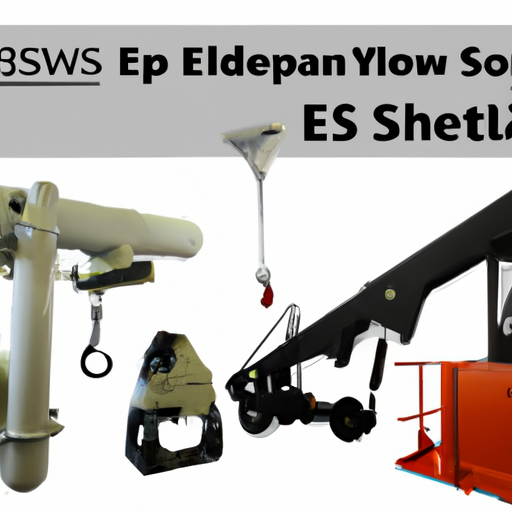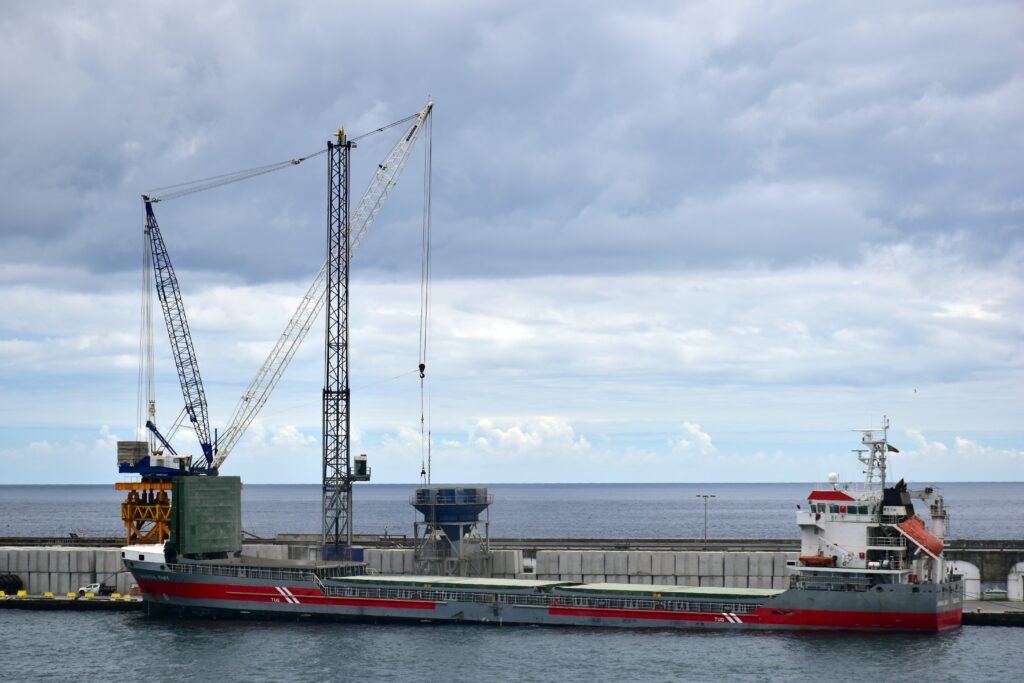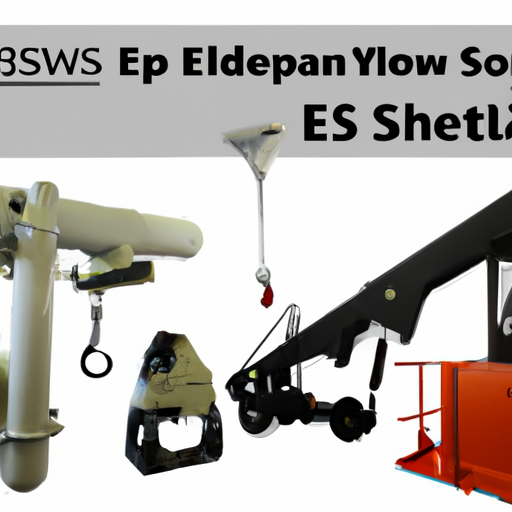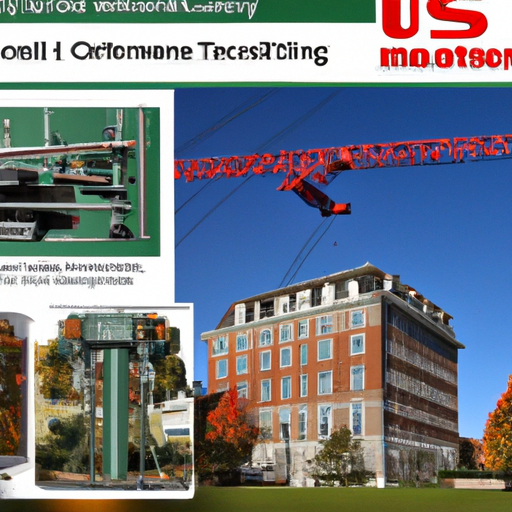
In this article, we will explore the fascinating world of hoist systems and how they can be adapted to suit various applications. Whether you’re in the construction industry or the healthcare sector, understanding the versatility of hoist systems is essential. We will delve into the key factors to consider when adapting a hoist system, from weight capacity to maneuverability, to ensure maximum efficiency and safety. So, if you’re curious about how these powerful machines can be tailored to meet your specific needs, stay with us as we take a closer look at the intricacies of hoist system adaptation.

Understanding the Basics of a Hoist System
Hoist systems are essential equipment used in various industries to lift and move heavy loads efficiently and safely. To fully comprehend the adaptability of hoist systems for different applications, it is important to first understand the basics of these systems.
Types of Hoist Systems
There are several types of hoist systems available, each designed to cater to specific applications. The most common types include electric chain hoists, wire rope hoists, pneumatic hoists, and manual chain hoists.
Electric chain hoists are versatile and widely used due to their ease of operation, lifting capacity, and precise load control. Wire rope hoists, on the other hand, are ideal for lifting extremely heavy loads and are commonly found in industries where high lifting heights are required. Pneumatic hoists are suitable for hazardous environments where electricity is not a viable option, as they are powered by compressed air. Lastly, manual chain hoists are cost-effective and reliable, making them popular for job sites with limited power sources.
Primary Components and Their Functions
A hoist system consists of several primary components, each playing a crucial role in its overall functionality. The key components include the hoist motor, lifting mechanism, control system, and load-bearing structure.
The hoist motor is responsible for powering the lifting mechanism and providing the necessary force to raise and lower loads. The lifting mechanism, which can be a chain or wire rope, is attached to the load, allowing it to be transported vertically. The control system enables operators to operate and control the hoist system, usually through buttons or a remote control. Lastly, the load-bearing structure provides support and stability to the hoist system and ensures the safe transportation of loads.
Standard Strength and Capacity
Hoist systems come in various strength and capacity ratings to meet the demands of different applications. The strength of a hoist system refers to its ability to withstand and lift heavy loads, while the capacity refers to the maximum weight it can safely handle. It is crucial to use a hoist system with the appropriate strength and capacity for a specific application to prevent accidents and equipment failure.
Identifying the Requirements of Different Applications
Hoist systems can be adapted to suit a wide range of applications in various industries, including construction, manufacturing, healthcare, and more. Understanding the specific requirements of each application is essential for successful adaptation.
Hoist System Applications in Construction
In the construction industry, hoist systems are commonly used for vertical transportation of materials, equipment, and even personnel on job sites. These systems are crucial for speeding up construction processes, reducing manual labor, and improving overall productivity. Whether it’s lifting heavy construction materials or transporting workers to elevated areas, a properly adapted hoist system can significantly enhance efficiency and safety on construction sites.
Applications in Manufacturing
The manufacturing industry often involves the movement and transportation of heavy machinery, tools, and raw materials. Adapting hoist systems in this industry requires consideration of factors such as the weight and dimensions of the loads, the need for precise positioning, and the availability of power sources. With the right modifications, hoist systems can streamline manufacturing processes, improve workflow, and optimize space utilization.
Applications in Healthcare
The healthcare industry requires specialized adaptations to hoist systems to meet the unique needs of patient care. These systems are invaluable for patient transfer, essential medical equipment movement, and lifting assistance for healthcare professionals. When adapting hoist systems for healthcare use, factors such as patient comfort, safety, infection control, and compliance with healthcare regulations must be carefully considered.
Other Unique Applications
Apart from the industries mentioned above, hoist systems can also be adapted for other unique applications. This includes sectors such as mining, offshore operations, entertainment, and agriculture. Each industry has its own specific requirements, and hoist systems must be tailored accordingly to ensure optimal performance.
Adapting Hoist Systems for Construction Use
Construction sites present unique challenges that require hoist systems to be adapted to meet specific requirements.
Requirements in Construction Sites
Construction sites often have limited space, and hoist systems need to be designed and adapted to function in these constrained environments. The system should be compact, allowing it to be easily maneuvered and positioned within the site. Additionally, construction sites often encounter adverse weather conditions, making it crucial for hoist systems to be weatherproof and durable.
Modifying Hoist System Strength
Construction materials such as steel beams, concrete blocks, and scaffolding require hoist systems with adequate strength and lifting capacity. Adapting hoist systems for construction use often involves adjusting the strength and capacity ratings to accommodate the heavy loads commonly found on job sites. This ensures that the hoist system can safely lift and transport the materials without any risk of failure or accidents.
Integrating Safety Mechanisms
Safety is paramount in the construction industry, and hoist systems must be adapted to include various safety mechanisms. These can include features such as emergency stop buttons, overload protection, anti-sway systems, and safety brakes. By incorporating these safety measures, the risk of accidents and injuries on construction sites can be significantly minimized.
Adapting Hoist Systems for Manufacturing Use
Hoist systems in manufacturing environments often require specific modifications to cater to the unique demands of the industry.
Manufacturing Scenario Requirements
Manufacturing facilities typically involve complex production processes that require precise positioning and movement of heavy machinery and equipment. When adapting hoist systems for manufacturing use, factors such as the speed and accuracy of load movement, the available space for installation, and the compatibility with existing production systems must be considered.
Adjustments for Manufacturing Materials
Manufacturing processes involve handling various materials, ranging from delicate components to heavy machinery parts. Adapting hoist systems for manufacturing often requires modifications to accommodate different material dimensions and weights. This may involve adjusting the lifting mechanism, load-bearing structure, and control system to ensure smooth and safe handling of materials.
Ensuring Operator Comfort and Safety
In manufacturing environments, hoist systems are often operated by workers who require a comfortable and safe working environment. Adapting hoist systems for manufacturing use can involve incorporating ergonomic features such as adjustable control panels, anti-vibration systems, and noise reduction measures. These adaptations promote operator comfort, reduce physical strain, and improve overall productivity.

Adapting Hoist Systems for Healthcare Use
Hoist systems play a vital role in healthcare facilities, assisting with patient transfer, mobility, and the safe movement of medical equipment.
Requirements in Healthcare Facilities
Healthcare environments, such as hospitals and care homes, demand hoist systems that prioritize patient comfort, safety, and infection control. Adapting hoist systems for healthcare use often requires modifications that consider the unique needs of patients, including those with limited mobility or delicate health conditions. Accessibility, ease of use, and smooth patient transfer are key factors to consider.
Modifying for Patient Comfort and Security
When adapting hoist systems for healthcare use, it is crucial to ensure patient comfort and security. Cushioned slings and harnesses can be integrated to provide gentle support and reduce the risk of injury. Additionally, hoist systems can be designed with features such as height-adjustable lifts, pneumatic suspension to minimize jolts or jerks during transfers, and secure locking mechanisms to prevent accidental releases.
Complying with Healthcare Regulations
The healthcare industry is heavily regulated, and hoist systems used in healthcare facilities must comply with specific regulations and standards. These regulations ensure patient and caregiver safety, infection control, and equipment performance. Adapting hoist systems for healthcare use involves adhering to these regulations and conducting regular inspections and maintenance to ensure compliance.
Adapting Hoist Systems for Unique Situations
Hoist systems can be tailored to suit unique operational needs in various industries.
Understanding Unique Operational Needs
Different industries may have specific operational needs that require hoist systems to be adapted accordingly. For example, mining operations may require hoist systems designed to withstand harsh environments, corrosion resistance, and the ability to operate in confined spaces. Understanding these unique needs is crucial to ensure that the hoist systems can perform optimally and safely in the given environment.
Tailoring Hoist System Designs
Hoist systems can be customized and tailored to meet the specific requirements of different industries. This may involve adjusting the dimensions, load capacity, control mechanisms, and compatibility with other equipment. By tailoring the design to suit the unique operational needs, the performance and efficiency of the hoist system can be maximized.
Ensuring Compatibility with Existing Equipment
For certain adaptations, it is essential to ensure compatibility with existing equipment in the work environment. This may involve modifying the hoist system to integrate smoothly with other machinery, conveyor systems, or automated processes. Compatibility ensures seamless workflow, minimizes downtime, and maximizes overall productivity.

Safety Considerations when Adapting Hoist Systems
Safety is of paramount importance when adapting hoist systems for different applications. It is crucial to prioritize safety measures to protect workers, equipment, and the overall work environment.
Meeting Industry Safety Standards
Adapting hoist systems must comply with industry-specific safety standards and regulations. These standards cover aspects such as load capacity, structural integrity, electrical safety, and emergency stop systems. By adhering to these standards, the risk of accidents, injuries, and equipment failure can be significantly reduced.
Installing Additional Safety Features
To enhance safety, additional features can be incorporated into the hoist system design. These may include overload protection devices, limit switches to prevent excessive travel, emergency stop buttons accessible to operators, and audible alarms for warning signals. These safety features add an extra layer of protection and ensure that the hoist system is reliable and secure during operation.
Training for Operators
Proper training for operators is crucial when adapting hoist systems. Operators must be educated on the safe operation, maintenance, and emergency procedures of the adapted hoist system. Regular training sessions and refresher courses help ensure that operators understand and follow safety protocols, reducing the risk of accidents and promoting a safe work environment.
Efficiency Considerations when Adapting Hoist Systems
In addition to safety, optimizing the efficiency of hoist systems brings significant benefits to various industries.
Improving Operation Speed
Efficiency can be improved by focusing on the operation speed of the hoist system. Through adaptations such as motor upgrades, faster lifting mechanisms, and streamlined control systems, the time required for lifting and moving loads can be reduced. This not only improves productivity but also allows for faster completion of tasks, saving time and resources.
Prioritizing Energy Efficiency
Energy efficiency is an essential consideration when adapting hoist systems for different applications. This involves using energy-efficient motors, employing technologies such as regenerative braking to minimize energy wastage, and designing control systems that optimize power consumption. These adaptations not only reduce operational costs but also contribute to sustainability efforts.
Ensuring Ease of Use for Operators
Efficiency also involves making the hoist system user-friendly and intuitive for operators. Clear and ergonomic control interfaces, intuitive control panels, and user-friendly software can simplify operation and reduce the learning curve for operators. A hoist system that is easy to use ensures smooth operations, reduces the risk of errors, and enhances overall efficiency.

Longevity and Maintenance of Adapted Hoist Systems
To ensure the longevity and reliable performance of adapted hoist systems, proper maintenance and regular inspections are crucial.
Checking the Durability of Modified Components
When adapting hoist systems for different applications, modifications are made to various components. It is important to check the durability and reliability of these modified components to ensure they can withstand the demands of the application. Regular inspections and testing should be carried out to identify any potential issues and address them proactively.
Scheduling Regular Maintenance
Regular maintenance is key to keeping hoist systems in optimal condition. Maintenance schedules should be established to perform routine checks, lubrication, and inspections. This helps identify any signs of wear and tear, loose connections, or potential malfunctions early on, preventing major breakdowns and minimizing downtime.
Educating on Common Wear and Tear Signs
Operators and maintenance personnel should be educated on common wear and tear signs to identify potential issues promptly. These signs may include unusual noises, vibrations, decreased lifting capacity, or erratic movement. By being vigilant and reporting such signs, necessary repairs and replacements can be conducted promptly, ensuring the continued reliability of the hoist system.
Case Studies: Successful Adaptations of Hoist Systems
To further understand the adaptability of hoist systems for different applications, let’s explore a few real-world case studies.
Case Study 1: Construction Industry
In a large-scale construction project involving the renovation of a high-rise building, a hoist system was adapted to meet the specific needs of the project. The hoist system was modified to accommodate heavy loads of construction materials, such as steel beams and concrete panels. Additionally, safety mechanisms such as anti-sway systems and overload protection devices were integrated to ensure safe and efficient transportation of materials. The adapted hoist system significantly expedited the construction process, reduced manual labor, and enhanced overall productivity.
Case Study 2: Manufacturing Industry
In a manufacturing facility where precision and speed were paramount, a hoist system was adapted to handle the movement of delicate components for the assembly line. The system was modified to include a finer control system for precise positioning, adjustable lifting speeds, and anti-vibration features to minimize the risk of damage during transportation. This adaptation allowed for smoother and more efficient production processes, resulting in improved product quality and reduced assembly time.
Case Study 3: Healthcare Industry
In a hospital setting, hoist systems were adapted to cater specifically to patient mobility and transfer. The hoist systems were equipped with specialty slings and harnesses designed to provide maximum comfort and support for patients with varying mobility needs. Furthermore, the hoist systems were modified to ensure smooth transfers, height adjustability, and secure locking mechanisms. By adapting hoist systems for healthcare, patient safety, comfort, and dignity were prioritized, enhancing the overall caregiving experience.
In conclusion, adapting hoist systems for different applications requires a thorough understanding of the specific requirements and challenges of each industry. By considering factors such as the environment, load capacity, safety measures, and efficiency considerations, hoist systems can be successfully adapted to enhance productivity, safety, and overall performance in industries ranging from construction and manufacturing to healthcare and beyond.










